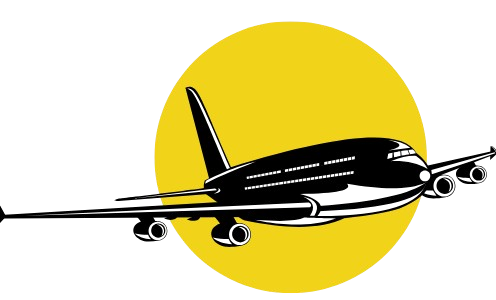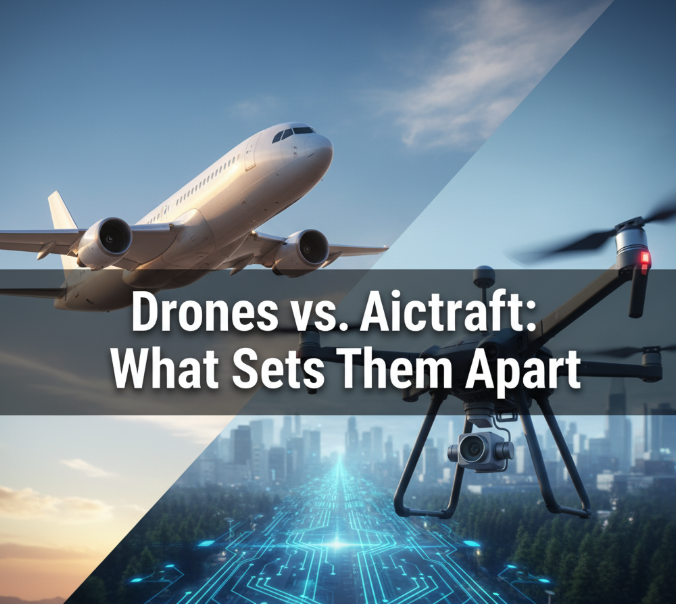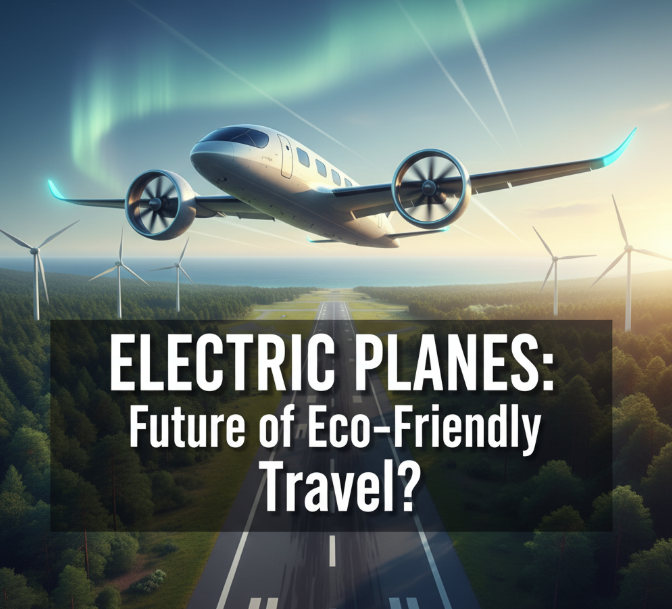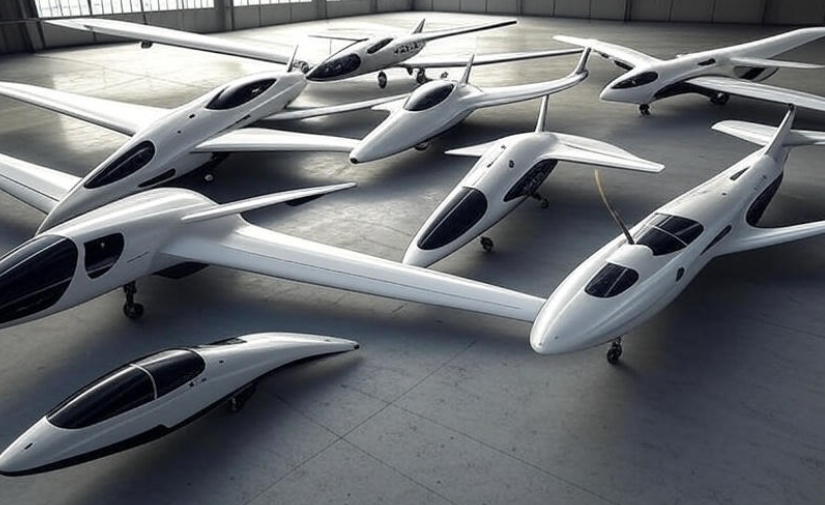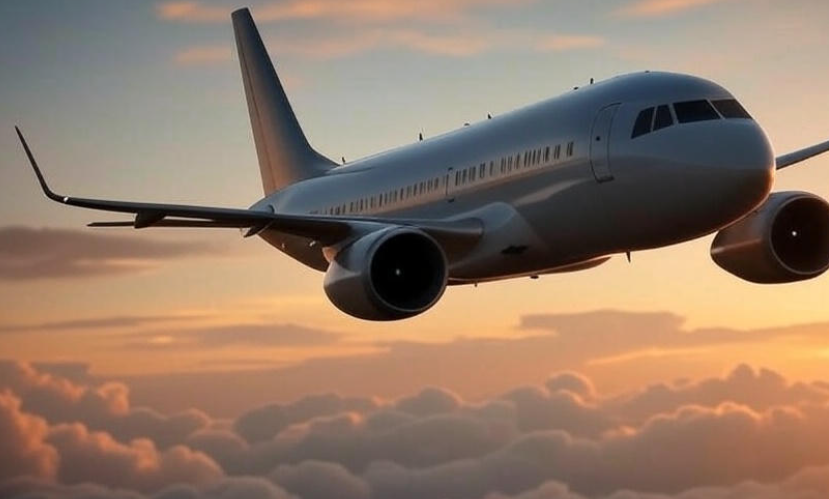When you glance upwards, what do you see? Perhaps you’ll spy a few flying machines whizzing along overhead. Some are huge commercial jets with hundreds of passengers, while others are small buzzing machines that can be flown from the ground. But what actually sets a drone apart from an ordinary airplane? The question has only gained in relevance as both technologies are being developed and increasingly share our airspace.
The aviation landscape has changed tremendously over the past few years. The days of drones being used solely for military purposes or as playthings are long gone, with applications such as aerial photography, and even saving lives in search-and-rescue missions now reality. Simultaneously, traditional planes maintain their grip on long haul trips and cargo. Both do similar yet unique jobs, but in fundamentally different ways.
In this in-depth guide we’ll cover all the ways drones differ from traditional aircraft. From how they fly to which types of pilots can fly them, you’ll find out what makes each style of flying machine unique. Whether you’re exploring a career in aviation, buying a drone or just curious about what your neighbor is doing, fly through this one-stop guide full of everything you want to know.
A Basic Definition: The Special Thing That Each Is Made Of
Before we delve into the specifics, let’s clarify some definitions for what is traditionally meant by drones and aircraft. These terms are used so often, yet they actually mean something in the aviation world.
What Exactly Is an Aircraft?
An airplane is any kind of powered flying vehicle that uses a counter thrust, such as propellers or jet engines, to sustain flight. This vast category covers airplanes, helicopters, gliders and even hot air balloons. The thing about standard aeroplanes is that people, either in the cockpit or as passengers in the cabin, are generally on board those things. These machines have been part of our world for more than a century, from the Wright Brothers’ iconic flight in 1903.
Most planes rely on powerful engines, wings and advanced control systems to remain in flight. They are made to move weight across long distances — whether that’s people, or cargo; often both. Commercial airliners such as the Boeing 737 can fly thousands of miles without refueling and accommodate up to 200 passengers.
What Defines a Drone?
A drone — also known as an Unmanned Aerial Vehicle (UAV) or Unmanned Aircraft System (UAS) — is an airborne machine that flies without a human pilot. Instead, it’s controlled remotely by a person on the ground or flies automatically based on preprogrammed instructions.
Drones are drones, and they come in many shapes and many sizes. Some are tiny enough to hold in your hand, and military drones can be as big as a small airplane. The defining trait is not size — it’s that the cockpit lacks a human pilot. This fundamental distinction provides opportunities that would be unsafe or unfeasible for conventional aircraft.
Size and Weight: Physical Appearance Matters
First things first, size does matter!
Undeniably, size is one of the most pronounced distinctions that differentiate drones from airplanes–with more diversity than you might realize.
Aircraft Dimensions
Conventional aircraft can range in size from tiny single-engine airplanes of about 1,500 pounds’ weight to huge airliners approaching a million pounds when fully loaded. A Cessna 172, an average small airplane, is roughly 27 feet long with a wingspan of 36 feet. Compare that to an Airbus A380, the biggest passenger plane in the world: 238 feet long, 261 feet wingtip to wingtip.
One is larger than the other because they have different functions. With just two or four passengers, small private planes buzz people around for a quick trips whereas jumbo jets fly hundreds of passengers across continents. Its size has a direct effect on everything from fuel consumption to where it can land.
Drone Size Categories
Drones also are more of a mixed bag in terms of size. The consumer drones are likely to be a few ounces in weight and 6-12 inches wide. Professional Photography Drones normally are in the range of 2-5 pounds and have prop size ranging from 12-24 inches. Military surveillance drones like the Predator are bigger; weighing roughly 2,250 pounds and a 55-foot wingspan —the size of small aircraft.
Common Drone Types
| Drone Type | Weight Category | Typical Use | Example Models |
|---|---|---|---|
| Nano/Micro | 0 – 250 g | Indoor flying, no photography or videography | Tiny Whoop |
| Small Consumer | 0 – 2 kg | Hobby, minor commercial use | DJI Mavic |
| Professional | 2 – 25 kg | Commercial photography and inspection | DJI Inspire |
| Tactical | 25 – 150 kg | Military | Scan Eagle |
| Large Military | Over 150 kg | Surveillance | MQ-9 Reaper |
The weight is very important for regulation. In the US, drones that weigh less than 0.55 pounds (250 grams) are more lightly regulated, and anything heavier has to be registered with the Federal Aviation Administration (FAA).
How They Fly
The way in which these two airborne vehicles can fly is, however, one of the principle distinctions between drones and airplane.
Traditional Aircraft Flight Principles
Lift is generally produced by fixed wings on aircraft. As the plane travels through the air (ideally it’s lifted forward by jet engines or propellers), air flows above and below the wings. The wing’s unique design generates reduced air pressure on top and higher pressure underneath, pushing the aircraft upward. That basic principle, described by Bernoulli’s equation, hasn’t changed much in early aviation.
Helicopters operate differently, using spinning blades (rotors) to push air downward, generating lift through thrust. These blades, whose angle can be adjusted by the pilot, are used to steer and gain or lose altitude. Both need to move forward through the air, or else spin their rotors, in order to fly.
How Drones Achieve Flight
Most hobbyist consumer drones are multirotors, often quadcopters that employ four propellers. Every propeller is essentially a little motor spinning rapidly and forcing air down to get lift. The drone can be made to go in any direction, hover or spin around by varying the speed of motors.
That makes drones nimble in a way that fixed-wing craft can’t compete with. A helicopter can hover, but it is far more complicated and costly to use than a drone. Larger drones, especially for long-range missions, use fixed wings like airplanes but the multirotor design predominates among consumers.
Drone motors are often brushless electric motors that run on lithium-polymer batteries. They are efficient and light but have a limited flight time. Conventional aircraft engines are far more powerful and able to fly for hours, but they’re also heavier and more complicated.
Control Systems: Piloting from Various Vantage Points
It’s like night and day how you fly drones compared to how you control planes.
Flying Traditional Aircraft
Flying an airplane or helicopter, well you have to be inside the cockpit. You can feel the aircraft move through the air, hear its engines and see the world from deep inside the machine. Pilots use various controls:
- Yoke or stick: Controls pitch (nose up/down) and roll (tilting left/right).
- Rudder pedals: Yaw (rotate the nose of airplane left/right).
- Throttle: Manages the amount of power and speed delivered to an engine.
- Multiple switches and instruments: Control all of the lights and even the state-of-the-art GPS system.
Pilots need to constantly check all the instruments indicating altitude, airspeed, heading, fuel and so on. They also maintain continuous contact with air traffic control, particularly near airports. Piloting a plane is steeped in training; it generally requires 40 to 60 hours of flight time for the simplest private pilot license.
Operating Drones
Drone pilots (also known as operators or pilots-in-command) stand on the ground while their planes are up in the air. They fly the drone using a remote controller, or with their smartphone and tablet. Drone controllers are surprisingly primitive, considering how far technology has come:
- Two joysticks: one for up/down and turning, the other for forward/backward/side-to-side movement.
- Automated button: One-key return to home, takeoff and landing with one tap.
- Screen display: Live camera video, battery level, altitude, distance and GPS location.
There are also numerous drones with intelligent flight modes that make it even easier to pilot. Obstacle avoidance, GPS positioning and predefined automatic return-when-battery-is-low make it a cinch for anybody to fly like a pro. A few drones can even track a particular person automatically or fly on a preprogrammed path without human intervention.
The gap between man and instrument poses certain specific problems. You can’t sense turbulence or wind shifts as you might in an airplane. You’re also viewing the world through a camera instead of your own eyes, and that takes some practice as well to master.
Range and Flying Duration: How Much Range & How Long it Flies
The distance and length of time they can fly reflects the huge operational differences.
Aircraft Capabilities
No one needs to be reminded that commercial airliners can fly astonishingly long distances. A Boeing 787 Dreamliner has a range of roughly 8,000 miles — the distance from New York to Hong Kong without stopping. On its tankful of fuel, it is capable of lingering in the air for 15-17 hours. Even a piston aircraft such as Cessna 172 can fly up to 600-800 miles on one tank of gas, which translates to being airborne for 4-5 hours!
The range for helicopters is lower: usually 250 to 400 miles for civilian models, flying times of two to three hours. These are limited by fuel capacity and engine efficiency, both of which are (comparatively) very generous compared to drones.
Drone Limitations
There are severe limitations of range and flight time for most consumer drones. A standard recreational drone such as the DJI Air 3 can go for roughly 45-48 minutes on a single battery charge, and fly up to 12 miles away from its controller (though typically regulations prevent you from flying beyond line of sight).
Cheaper drones will get about 10-15 minutes of flying time before needing a new battery. Even commercial drones hardly ever fly for more than an hour. Here’s a comparison:
| Drone Type | Average Flight Time | Average Range |
|---|---|---|
| Budget Consumer | 10-20 minutes | 0.5-2 miles |
| Mid-Range Consumer | 25-35 minutes | 3-7 miles |
| High-End Consumer | 40-50 minutes | 10-15 miles |
| Professional | 30-60 minutes (depends on the model and brand) | 5-20 miles |
| Long Endurance Military | 14+ hours | 1000+ miles |
Drones are hindered by battery technology more than anything else. The problem was that batteries are heavy, and lithium-polymer technology today will only squeeze so much energy into a pound of battery. A few military and commercial drones work on gasoline engines or hydrogen fuel cells to achieve longer flight times, but they are expensive and complicated.
The brief duration in the air means drone operators require multiple batteries to keep flying. It’s not unusual for professional drone pilots to pack along 4-6 batteries for a day of flight.
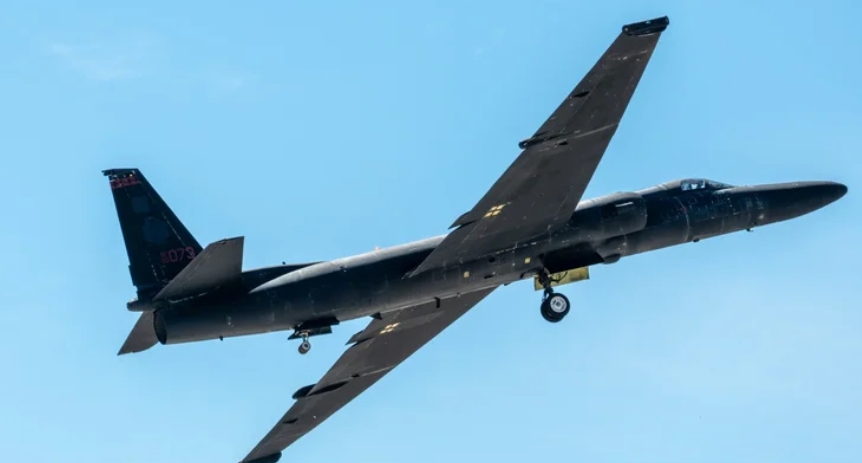
Speed Capabilities: Fast versus Faster
When it comes to speed straight out of the gate, conventional aircraft have traditional planes beat.
Aircraft Speed
Commercial jetliners generally fly 500 to 600 miles per hour. Military jets can travel at more than 1,500 mph — over twice the speed of sound. Even small private planes usually cruise at 120 to 180 mph. Helicopters are slower — generally about 120 mph to 160 mph.
These rates are needed for traveling at high speeds. A cross-country flight that takes an airliner 5 hours would require days or be impossible when using a drone instead.
Drone Speed
Consumer drones are much slower. The vast majority of consumer-grade drones top out in the 30-45 mph range when using normal flight mode. Racing drones, which are meant for speed competitions, can top 100-120 mph in short intervals but these are specialty aircraft not used as part of basic drone operations.
Professional camera drones typically fly from 20-35 mph, which allows for shooting crisp footage and is easy on the battery. Military drones are quite diverse; the surveillance ones may cruise at 80-120 mph but they’re built for stamina, not speed.
The difference in speed is fairly logical given their use. Drones usually flit around small areas to snap photos, inspect structures or observe situations. They don’t require airline speed because they aren’t crossing hundreds of miles.
Altitude: How High Can They Go
However, their maximum operating altitudes vary considerably.
Aircraft Altitude Limits
Commercial airplanes usually operate from 30,000-42,000 feet sea level. This altitude provides certain advantages: less air means less drag and better fuel efficiency, and for most weather systems, there is lower turbulence. Some special purpose planes fly even higher — the U-2 spy plane flies at 70,000 feet and above.
Small private planes tend to fly lower, at between 8,000 and 15,000 feet. The limiting factor for unpressurized planes is that human beings require oxygen above 12,500 feet, and the air up at 15,000 feet becomes dangerously thin without sufficient gear.
Drone Altitude Restrictions
The law in the United States and in many other countries bans flights of most consumer drones above 400 feet above ground level. This keeps them high above much of the world’s manned aircraft, which generally fly at higher altitudes.
In strictly technical terms, a whole lot of drones could fly far above that. Some have flown as high as 30,000 feet in controlled tests, but that’s dangerous and illegal for civilian operations. The thin air at altitude makes propellers less efficient, batteries run down faster when it’s cold and GPS signals can become untrustworthy.
Military drones like the Global Hawk fly routinely above 50,000 feet for surveillance missions, but these are purpose-built for high-altitude flight and operate under an entirely different set of rules than do civilian drones.
Payload Capacity: What They Carry
The ability to be weight-bearing, with anything related to passengers, cargo or tools, is another big differentiator.
What Aircraft Transport
Here is where conventional aircraft are so good. A Boeing 747 can transport as many as 416 passengers plus their baggage, weighing about 180,000 pounds. Some cargo planes, like the Antonov An-225 (before it was destroyed), could carry a whopping 640,000 pounds.
Small planes, even the most modest of them, are capable for their size. A Cessna 172 can take up to about 800 pounds beyond the pilot — three passengers and some luggage. Aircraft are indispensable for cargo, travel, trade and logistics.
Drone Payload Limits
The vast majority of consumer drones fly with no more than their built-in cameras, which weigh ounces, not pounds. That is generally considered close to what a typical camera drone could carry: with 1-2 pounds maximum extra payload capacity – sufficient for a slightly heavier camera or small package.
Larger professional drones tailor-made for specific purposes can hold more. Agricultural drones may hold 20-50 pounds of liquid fertilizer or pesticide. Heavy-lift industrial drones can lift from 50 to 100 pounds such as for construction purposes or deliveries, but these are costly specialized machines.
Delivery drones, such as ones in the works by companies like Amazon and Zipline, often are used to transport packages ranging up to 5 pounds. While the F.A.A. has approved certain operations with heavier payloads, battery constraints make hauling much weight impractical for most drone uses.
Military drones defy that pattern — the MQ-9 Reaper, for example, can carry 3,750 pounds of weapons and sensors, as much as some light attack aircraft.
Rules and Regulations: Who Gets to Fly Them
The laws applying to drones and aircraft do not compare in the slightest sense however they are administered by aviation governing bodies.
Aircraft Licensing Requirements
If you want to fly any ship with souls on board (including your own!), then you need a minimum Private Pilot License. This requires:
- Minimum age of 17 years
- 40 hours of flight training (the bulk of our students will require somewhere on the order of 60-70 hours)
- Passing a written knowledge test
- Passing a flight test with an examiner
- Medical certificate confirming that you are fit to fly
Commercial pilots requires even more training — often 250+ hours of flight time with more written and practical tests thrown in. Airline pilots require 1,500 hours of flight time and an Airline Transport Pilot (ATP) license.
The training is costly, typically running between $8,000-$15,000 for a private pilot license and $60,000-$100,000 for full commercial training. The investment casts a leaden light on the complexity and safety requirements of ferrying humans through the sky.
Drone Operation Rules
Flying a personal drone is way easier. In the USA, to be a recreational pilot:
- Get your drone registered if it’s heavier than 0.55 pounds (it’ll cost you $5 and last for three years)
- Adhere to the rules of recreational flying (stay less than 400 feet above the ground, maintain sight of the drone, don’t fly near airports)
- Complete a free online safety test called TRUST
If you want to make money on your drone aircraft (conducting commercial operations with that drone), you need a Remote Pilot Certificate. This requires:
- Minimum age of 16 years
- Successful completion of a written aeronautical knowledge test
- TSA security background check
The test, which costs about $175 and for which most people can prepare in a few weeks of study, is still widely accepted when scores fall short. There is no flight time requirement, nor learning to be followed up with a practical test. The whole thing adds up to a few hundred dollars, in contrast to several thousand dollars for aircraft pilot training.
Regulations are a moving target as drone tech continues to advance. New rules are being created for drone deliveries, flights over people and operations beyond the visual line of sight.
Cost: The Financial Differences
That price difference between drones and aircraft is giant, and it affects who gets to have them and use them.
Aircraft Ownership Costs
Buying an airplane is expensive. A new Cessna 172 actually runs about $400,000; the Cessnas of older vintage could go for $50,000-$100,000. New light sport aircraft begin at around $100,000. Stepping up to two-engine airplanes or helicopters can easily bring costs of $1-5 million. Commercial jets run in cost from $50,000,000-$450,000,000 per plane depending on type.
But price of purchase is only the start. Operating costs include:
- Fuel: About $50 to $150 an hour for smaller planes, thousands an hour for jets
- Maintenance: Annual inspections, overhauls, repairs — usually $10K to >$30K per year
- Insurance: $1,000-$5,000+ per year for small planes
- Hangar or tiedown: $200-$500+ per month
- Database updates: $200 to $500 per year for GPS
Owning and flying a small plane in general consumes $15,000-$30,000 of cash annually for even modest use totaled up. This is why many pilots rent aircraft or join a flying club rather than own.
Drone Affordability
And compared to fleets of aircraft, drones are incredibly cheap. A good beginner’s drone costs $200 to $500. Good camera drones start at a few hundred dollars. Mid-range consumer drones most commonly cost several hundred dollars to more than $1,000. Commercial-grade drones range from $2,000 to $10,000+ depending on functionality.
Operating costs are minimal:
- Electricity: A few pennies to recharge batteries
- Spare batteries: $100 to $200 each (you’ll want plenty of these)
- Propellers: Can cost $20-$50 per set of four, depending on how often they get broken
- Insurance: $100 to $500 annually for commercial flying
Up to the point of purchase, most owners spend less than $500 per year on their drone. Even commercial drone pilots consider their equipment investment ridiculously low by the standards of other business tools.
And it’s this low-cost entry that has made drones so popular. A teen can save for a few months and buy a drone that flies well, whereas owning an airplane is unattainable for most.
Safety Features and Concerns
There are safety concerns with drones as well as aircraft, but they present in different ways.
Aircraft Safety Systems
Today’s most advanced airplanes have more than one safety system in place. Engines are engineered for maximum reliability, with failure rates measured in incidents per million flight hours. Aircraft are equipped with redundant electrical systems, multiple navigation instruments and emergency aids like parachutes (in some small planes) or ejection seats (military jets).
Pilots train extensively for emergencies. They simulate engine failures, instrument malfunctions and all kinds of weather. Commercial pilots must be re-trained every 6 months over their entire career.
Even so, airplane crashes occur. When they do, the results are typically catastrophic because of the speeds, altitudes and energies at play. It’s why planes are held to such high standards of safety.
Drone Safety Technology
Drones feature impressive automated safety features that have not been around for a decade:
- Obstacle avoidance: Sensors detecting trees, buildings, and other objects blocking their path, triggering emergency stopping or rerouting
- Return-to-home: Never worry about getting lost when flying, the drone would return by simply pressing the home button
- GPS positioning: Automatically maintaining position and location
- No-fly zone enforcement: GPS prevents drones flying near airports, buildings, or anywhere you don’t want them
- Auto-landing: Drone auto-lands when it’s out of battery
Such characteristics make the drones very safe for operator and people around them too. However, risks remain. Drones can crash after their batteries die or in adverse weather. And their propellers can inflict injuries if someone stands too close.
The primary safety issue with drones is their relationship to piloted airplanes. A collision between a drone and an airplane could easily shatter windows, damage engines or control surfaces. That’s why altitude limitations and airport no-fly areas are so zealously policed.
Usability: Whom Each Serves Best
Drones and aircraft have different strengths that make them suited to different types of missions.
Where Aircraft Excel
Traditional aircraft dominate these applications:
- Immigration and emigration: Transporting people long distances across the globe
- Mass transit: Transporting hundreds at a time
- Bulk cargo: Moving great quantities of freight, such as grain or coal, in a cost-effective manner
- Medevac: Medical evacuation, or the rapid transportation to a hospital of wounded persons
- Firefighting: Releasing thousands of gallons of water or fire retardant
- Sport parachuting: Transportation of jumpers to altitude for sport jumping
Jets are designed for missions to be performed at high speed, over long range or at a high operational altitude but with the possibility of carrying large loads. They are also crucial in scenarios where a human presence is useful, such as piloting through heavy traffic or offering passengers snacks along the flight.
Where Drones Shine
There are certain tasks at which drones outperform when their distinctive abilities provide an edge:
- Aerial photography and videography: The panoramic view from above
- Building and infrastructure inspections: Safe inspection of roofs, bridges, power lines, and towers
- Precision Agriculture: Crop surveys, disease and problem recognition, spot treatments
- Search and rescue: A quick survey over large areas, to find lost people in dangerous terrain
- Package delivery: Fast shipping of small items over short distances
- Aerial mapping and surveying: Detailed 3D models and topographical maps
- Wildlife monitoring: Watching animals without spooking them
- Disaster assessment: Assessing destruction in the wake of a hurricane, earthquake or flood
Drones are great for jobs that demand a close-up view, fit into tight spaces or are too hazardous for people. They are also cost-effective for the jobs that helicopters, which are costly to operate, would typically perform.
Environmental Impact: Footprints in the Sky
Another key difference is the environmental impact of drones vs. planes.
Aircraft Environmental Concerns
About 2-3% of global carbon dioxide emissions come from aviation. One intercontinental flight produces around 1-2 tonnes CO2 per passenger. Each flight burns thousands of gallons of jet fuel, sending out gases such as carbon dioxide, nitrogen oxide and particulates into the environment.
Airplanes also generate a great deal of noise pollution, most notably around airports. Often the communities that lie beneath flight paths are bombarded with noise pollution and can suffer sleeping problems, concentration issues, and a reduced quality of life.
The industry is pursuing improvements — modern aircraft use 20%-30% less fuel than older planes, and there’s ongoing research into electric and hydrogen-fueled planes. Still, on anything larger than small regional planes, fully electric aircraft are decades away.
Drone Environmental Benefits
Nearly all consumer and professional drones fly on batteries without the production of any direct pollutants in-flight. Electricity to charge them could come from renewable sources, such as solar or wind energy, rendering the air travel carbon-neutral.
Unlike with an aircraft, drones produce much less noise. The buzzing noise can sound quite loud to those who are near it, but it does not extend farther than a few dozen feet and sounds little like the din created when a plane flies overhead.
Drones are also environmentally friendly in that they require less materials due to their small size and weight. Lithium-ion batteries do have environmental tolls in mining and disposal, however, that cannot be overlooked.
When drones take the job of helicopters (such as conducting infrastructure inspections), their environmental benefits are significant—as much as 20 to 50 gallons of fuel burned per hour for a helicopter compared with just a few cents’ worth of electricity for a drone.
The Future: Where They Go From Here
Both forms of technology are still developing in incredible ways.
Aircraft Innovation
Traditional aviation’s future passes through:
- Sustainable aviation fuels: Using plants, waste or even captured CO2 for production, these could cut emissions by 80%
- Electric and hybrid aircraft: Flying already as prototypes, these could revolutionize short regional hops
- Supersonic flight: New designs could halve flight times on international routes and lessen sonic boom impact
- Automated flight: Work is underway to lower pilot workloads and one day lead to a fully automatic commercial jet
Drone Advancement
Drones are evolving even faster:
- Extended flight times: Improved batteries and hybrid powerpacks could increase endurance by a factor of three
- Urban air mobility: Flying taxis (passenger drones) are being tested in various cities around the world
- Swarm operations: Drones working together, AI-controlled, for complex tasks
- AI-driven autonomy: Drones that can fly anywhere, and make decisions on their own
- Widespread delivery networks: Everyday drone package delivery can become a reality for many communities
The distinction between drones and planes may blur even more as passenger drones come online. Are they big drones or little pilotless planes? The divide may come to be more a matter of operational category, versus technology.
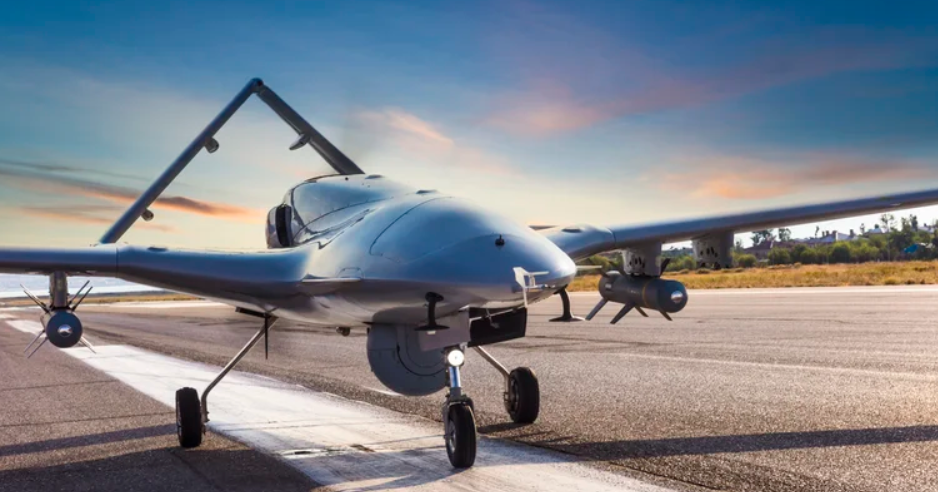
Summary: The Biggest Differences You Can Quickly See
Remember the key differences between drones and airplanes:
| Aspect | Conventional Aircraft | Drones |
|---|---|---|
| Pilot location | Inside | On the ground (remote) |
| Size | 1,500-900,000+ pounds | A few ounces-2,500+ pounds |
| Flight time | 2-17 hours | 10-60 minutes (civilian) |
| Range | 300-8,000+ miles | 0.5-20 miles (civilian) |
| Speed | 120-600 mph | 20-45 mph |
| Altitude | 8,000-42,000 feet | Restricted to 400 ft (civilian) |
| Payload | 800-180,000 lb | 0-50 lbs (typical) |
| License requirements | 40-60 hours of training & extensive testing | Short written test (commercial) |
| Purchase cost | $50,000-$450 million | $200-$10,000 (consumer-professional) |
| Operating costs | $15,000-$30,000 annually | $200-$500 annually |
| Best use | Long distance travel, mass transport, heavy cargo | Photography, inspection, surveillance, short deliveries |
Frequently Asked Questions
How high can drones fly compared with airplanes?
The vast majority of civilian drones are legally bound to fly below 400 feet above ground level to keep them well out of the way of manned aircraft. Although some drones can technically fly higher, it is illegal and dangerous to do so. Military drones can and do operate at high altitude — some exceed an already impressive 50,000 feet — but these are specialized machines kept on a tight leash by the military.
How long can drones remain airborne, compared to planes?
Commercial airplanes may stay aloft for 5-17 hours on a full tank of gas, your average consumer drone might last just 15-45 minutes on one battery charge. Even professional drones typically can’t fly for more than an hour. The discrepancy has to do with energy storage — there’s so much more energy in a pound of jet fuel than in a pound of batteries. Some military drones with gas engines can fly for 24+ hours.
Is flying a drone harder than flying an airplane?
By contrast, piloting a conventional plane is far more complex and time consuming—usually 40 to 60 hours of instruction for just your basic pilot’s license. Today’s drones are also significantly easier to fly, with built-in features for GPS stabilization, obstacle avoidance and one-button takeoff/landing. Most people can get the hang of flying a drone in a matter of hours (some even more quickly). But to become a professional drone pilot, it still takes skill.
How come planes are more expensive than drones?
Planes are larger and heavier and use more expensive materials. They are powered by complex jet engines or aviation-grade piston engines rather than basic electric motors. Planes also require layers of safety certifications, redundant systems and rigorous testing that manned aircraft need. Because you have to worry about keeping humans alive at high altitudes and speeds, planes must be built to far higher standards, making them much more expensive.
Will drones ever be able to take the place of airplanes for transportation?
Not for most purposes. Drones are not nearly as fast, far-flying, heavy-lifting or long-lasting as airplanes and simply won’t be used for long-distance travel or mass transportation. But passenger drones (also known as flying taxis or eVTOL aircraft) are in development for short urban hops. They could substitute for helicopters or ground transportation to a certain extent for getting around cities, but they will not displace commercial airlines for flights between cities or countries.
Are drones safer than airplanes?
Both are good on safety, but they are hard to compare directly because they function in different ways. Commercial aviation is actually very safe, with an average of about 0.2 fatal accidents per million flights. Drones are less risky to their operators, because there isn’t a person on them, but they can endanger planes with pilots if operated the wrong way. Today’s drones have great automated safety features which will stop most incidents, and are pretty safe when flown sensibly.
Do I need a license for flying a drone the way I do for an airplane?
Drones have much easier specifications to meet. For hobby flying in the U.S., all you need to do is register drones over 0.55 pounds ($5 fee) and take a free online safety test. If you want to fly commercially (to film a wedding or inspect a home, for example) you do need a remote pilot certificate — which does require a written test, but no flight time or practical exam. In stark contrast, flying an airplane demands a minimum of 40 hours of instruction, multiple exams and a medical certificate — with the process costing thousands of dollars and taking months.
How fast can drones really fly in comparison to planes?
Commercial jets fly at 500-600 mph, and even small private planes typically fly at 120-180 mph. Consumer drones are slower, typically with a top speed in normal mode of 30-45 mph. Racing drones can travel 100-120 mph, but that’s not typical of everyday drones. The difference in speeds is a reflection of the difference between their purposes — drones operate over very small areas and don’t need that much speed, while aircraft must cover greater distances more rapidly.
Final Thoughts
Drones and conventional planes are two separate ways of conquering the sky. Aircraft are great at moving people and stuff quickly across long distances, after more than a century of innovation in aviation. Drones make the sky accessible to everyone, offering powers that were either impossible or too expensive just a decade ago.
One of them isn’t better than the other — it’s simply a tool for another job. A drone cannot fly you to Paris for a vacation, but an airplane can’t hover directly three feet away from a cell tower in order to inspect it for damage. And as technology progresses, each will only grow smarter, more efficient and further entrenched in our daily activities.
Whether the plane you are watching is a lumbering airliner breaking through the cloud line, or a tiny drone filming sunset at 300 feet, you’re seeing human ingenuity at work. Both have their place in the sky, and having a grasp of what makes either possible allows us to enjoy the spectacular variety of human flight.
